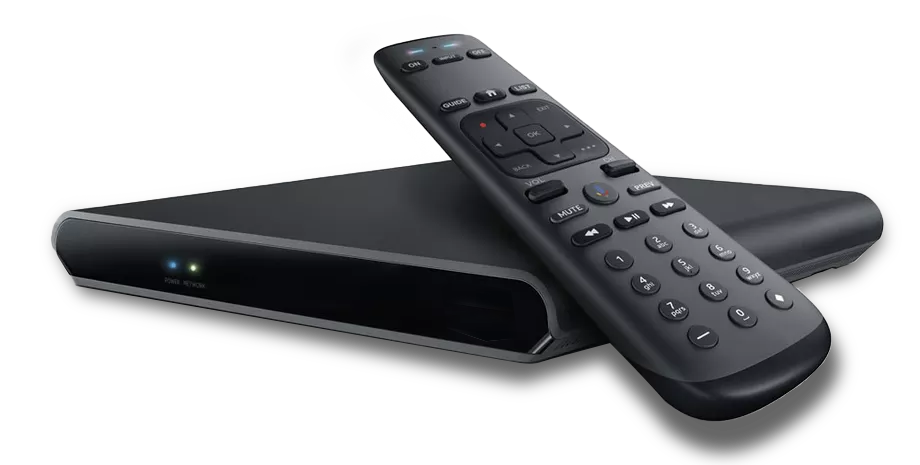Spend even a little bit of time reading this blog and you’ll realize that I’m a pretty big satellite TV fan. I’ve personally had DIRECTV satellite at my home for over 20 years, and I’ve spent a decent amount of time behind the scenes trying to improve the product. I hung in with them during the bad days of AT&T’s ownership, when it seemed like the company wanted nothing more than to self-destruct. Yes, I’m a DIRECTV aficionado. It doesn’t stop me from calling them out when there’s more work to be done. This is one of those times.
DIRECTV’s flirtation with streaming
DIRECTV management first announced their streaming product in 2016. In those days, the idea of paying more than $10 for a streaming service sounded absurd, and here was DIRECTV touting a streaming service that could cost you $60 or $70 a month. A lot of people, myself included, wondered if this was just another misguided AT&T idea.
But I have to say, when the product (originally called DIRECTV NOW) launched, it was pretty good! There was a cloud-based DVR, a great selection of channels, and good device support. It seemed like a good deal for those folks who couldn’t get a satellite dish on the roof for whatever reason.
As the years went on, the biggest change in the product was its name. The very same product cycled through being called AT&T TV, AT&T TV NOW, DIRECTV Stream, and is now called just “DIRECTV.” Most folks call it DIRECTV for Internet because otherwise it would be too confusing.
When they got serious

You could tell DIRECTV was getting serious when they rolled out new hardware specifically designed to run that streaming service, whatever it was called. The new device, pictured above, had about as many names as the service it ran. Call it Osprey, C71KW, “the AT&T TV device, “The DIRECTV Stream device,” or Gemini, it didn’t matter. Like similar boxes from DISH and Comcast it ran apps using the Android TV operating system. Like a traditional DIRECTV receiver it had a custom remote with a number pad and dedicated buttons.
That device became so popular that another version of it renamed Gemini for Satellite, rolled out for the satellite TV crowd. The streaming crowd got a new device that was even smaller, the dongle-sized Gemini Air.
So this is where we are now
In late 2023, almost 2024, there are two services. Both are called DIRECTV and both have a device called Gemini. One uses a satellite dish and one uses the internet exclusively. The services are priced almost identically. There are only a few differences:
- DIRECTV (for Satellite) has a local, unlimited DVR and more international programming and sports programming.
- DIRECTV (for Internet) has cloud DVR that deletes programs after 90 days but you can access it easily from anywhere.
- Gemini (for Satellite) has an Ethernet port.
- Gemini Air (for Internet) is so small it hides behind a TV. (You can still get a used device with an Ethernet port, but not a new one)
The problem comes when people want the service from one and the device from the other. Hardly a day goes by when someone doesn’t ask about a Gemini Air for satellite, or a Gemini with an Ethernet port for streaming. The answer is simple: the satellite and internet services should merge.
The merge has already (kinda) happened
If you have satellite, you can run the DIRECTV app on your phone, tablet or streaming device. This essentially gives you everything the streaming service offers except true cloud DVR. It also doesn’t give you the Gemini Air. But beyond that it’s pretty easy to get one service that works on satellite and internet.
However, in order to get it, you do need a physical address for the dish to be set up. For those who don’t have it, they can only get DIRECTV for Internet. No Ethernet port, no local DVR.
So while the merge has kind of already happened, there’s still room to cross that final hurdle.
Come on, DIRECTV, just do it
It’s time. There should be one service with one user interface that looks the same everywhere. Both the Gemini and Gemini Air should work with it. Period.
For those who want satellite and are willing to accept a two-year contract, they’ll get satellite service. For those who want to be month-to-month, they’re internet only. But it should be one account with one set of hardware and you can watch it anywhere.
I feel like at this point they’re so close. It seems like there isn’t much stopping them from doing it. And who knows, maybe they’ve been working on it for a year or so already and we just don’t realize it. It’s just such a logical move. Comcast and Spectrum have essentially turned their live TV services into streaming services. It’s a little easier for them since they control the fiber that their services run on. But DIRECTV can’t be that far behind, can they?
Let’s see how this article ages
I’m going to take a look at this article in mid-2025 and see where we are. I’m hoping by then there will be one unified service. If not, I’ll have to wonder why not.





